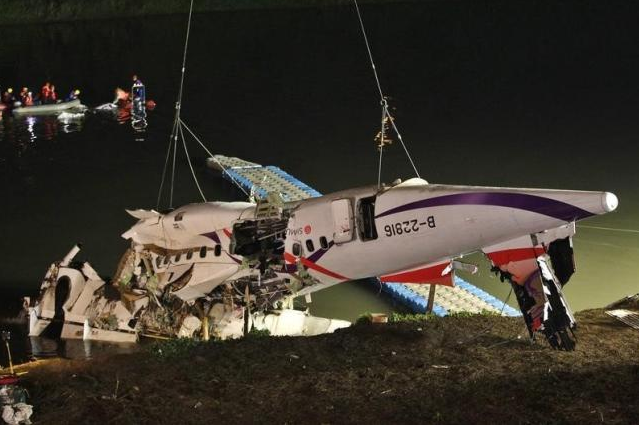Taipei Plane Crash UPDATE: Pilot Error Confirmed

According to a Reuters article, the captain of the TransAsia Airways airplane that crashed shortly after take-off in February inadvertently shut down the working engine after the other one had lost power. A report released by the Aviation Safety Council (ASC) showed that about 3 minutes after take-off the captain, who was flying the plane, said, “Wow, pulled back the wrong side throttle.”
In twin-engine aircraft such as the ill-fated TransAsia ATR, the emergency procedure following the failure of one engine is to pull back the throttle of the failed engine and feather the prop (see the procedure explained by John King of King (flight) Schools here).
Although he doesn’t explain it in this particular video, the technique for determining which engine is failed is to assess the pressure on the rudder pedals. The phrase instructors teach their students is “Dead foot, dead engine.” The rudder pedal that is providing no pressure against the pilot’s feet corresponds to the side of the aircraft with the failed engine. After pulling back the dead engine throttle, the next step is to feather the prop. This helps to decrease the drag from a propeller that is no longer producing thrust. The full procedure is explained in an AvWeb article here.
Anyone who has made the transition from flying single-engine aircraft to flying multi-engine aircraft will tell you: 90% of the training has to do with emergency procedures. The reasoning is simple. When both engines are working properly, you pretty much fly the airplane the same way that you would a single-engine aircraft. However, the primary benefit of a multi-engine aircraft, besides increased speed, is the ability to continue to fly if one of the engines fails. But, as the TransAsia accident shows us, this ability is useless if the pilot does not follow the emergency procedures correctly. Regular practice is essential because in the heat of the moment, you don’t have time to think much. The training has to kick in subconsciously. When US Airways Flight 1549 ingested a flock of birds and lost BOTH engines, Captain Sullenberger didn’t think about what the necessary emergency procedures were. He simply started executing them immediately. All passengers on that flight walked away without a scratch. The 43 people who died on the TransAsia plane were not so fortunate.
